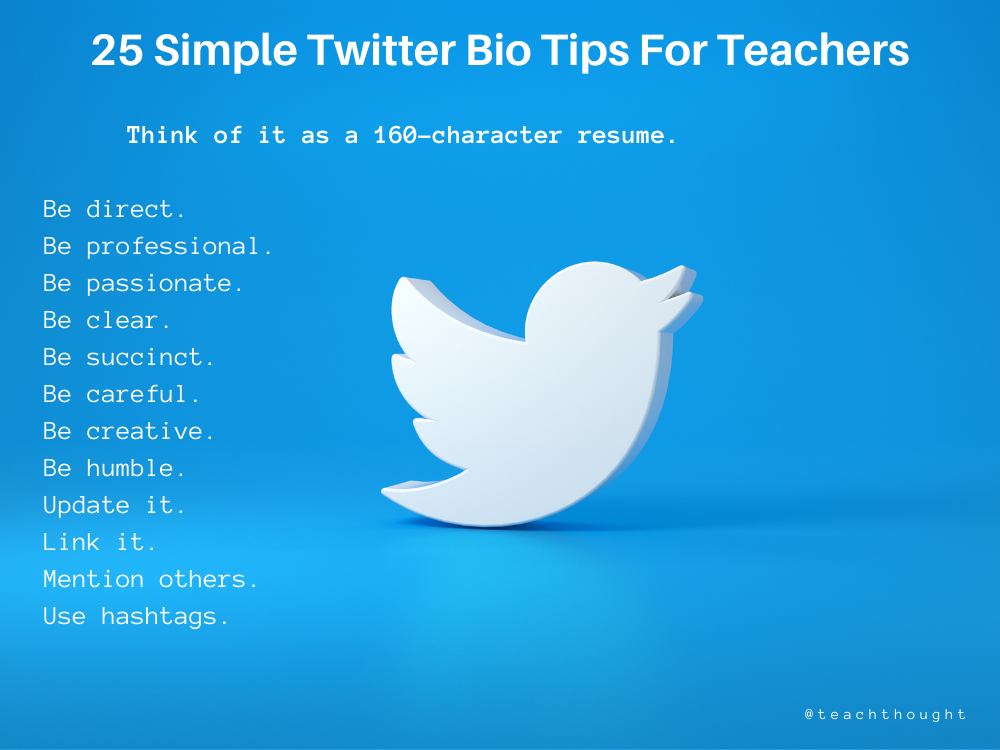The twitter bio is usually an afterthought for most people–something that they spend a few minutes putting together when they create an account, then forget about until updating it three years later.
But the bio can be a critical matter of your “online brand” whether you want such a “brand” or not.
The Goal Of the Twitter Bio
The goal of your bio should be to clarify who you are and to potentially attract new followers who might benefit from your ideas or collaboration.
Yes, what you tweet is far more important than a bio few people read, but as weeks turn into months, and months turn into years, who people choose to follow can sometimes boil down to that bio, especially as twitter tools that choose twitter accounts for you are often based not on tweets, but the bio itself. Even if you don’t necessarily care how many people follow you, you hopefully do care how you are perceived.
While you may not write it as an advertisement, that’s essentially what the bio ends up being. With that in mind, there are some tips you can use to help you create a better bio that reflects who you are as an educator. You’ve only got 160 characters. Make them count.
One tip: Unless the account is anonymous, don’t tweet anything you wouldn’t announce over the school PA system or in a letter home to parents.
See also 20 Ways High Schools Are Using Twitter In The Classroom
25 Twitter Bio Ideas For Teachers
25 Tips To Improve Your Educator Bio (2025/2026 Update)
- Lead with your purpose. Open with why you’re here and what ideas you want to advance—not your pets, school mascot, or job title.
- Signal conviction. If you don’t care enough to stand behind it, leave it out.
- Short can still win. A powerful five-word bio can be more memorable than a paragraph.
- Use niche keywords. Terms like PBL, research literacy, humane assessment, AI pedagogy, or civic education help people understand what you actually talk about.
- Study the bios you respect. Borrow structure, tone, or clarity—not personality.
- Lead with ideas, not titles. Titles age; ideas scale.
- Stay grounded. A platform isn’t a résumé for status. It’s a signal of what you contribute.
- Treat it like a micro-résumé. You’re communicating value, not asking for a job.
- Refresh it as you evolve. Update when your focus shifts or your work moves in a new direction.
- Offer a reason to follow. Preview the content you actually deliver—frameworks, literacy work, AI guidance, PBL examples, etc.
- Connect your ecosystem. Link to your hub (site, Substack, landing page, portfolio) so people can go deeper.
- Use an intentional avatar. It should match the tone of your work. If you wouldn’t use it on a slide deck, don’t use it here.
- Keep a human voice. Professional does not mean bland or generic.
- Choose a name that signals alignment. Your handle should reinforce your lane, not compete with it.
- Use a welcoming image. A simple smile or a clean logo builds trust more quickly than a moody, out-of-context headshot.
- Name your trajectory, not just your role. Where you’re headed tells people why staying connected matters.
- Credit your influences. Signal your intellectual lineage. People follow networks as much as individuals.
- Use hashtags strategically. One or two at most—they should reinforce your lane, not clutter it.
- Watch tone. Snark and irony travel poorly out of context.
- Add one piece of proof. One credential or contribution is enough. More looks like posturing.
- Proofread. Typos undermine credibility in seconds.
- Use crisp sentences. Clarity beats lists of unfocused descriptors.
- Use a simple pattern if needed. What you do + what you think about + where to learn more.
- Make it thesis-tight. If someone can’t summarize your focus after reading once, revise.
- Name the exchange. Tell people what you give and what kind of collaboration you’re looking for.
